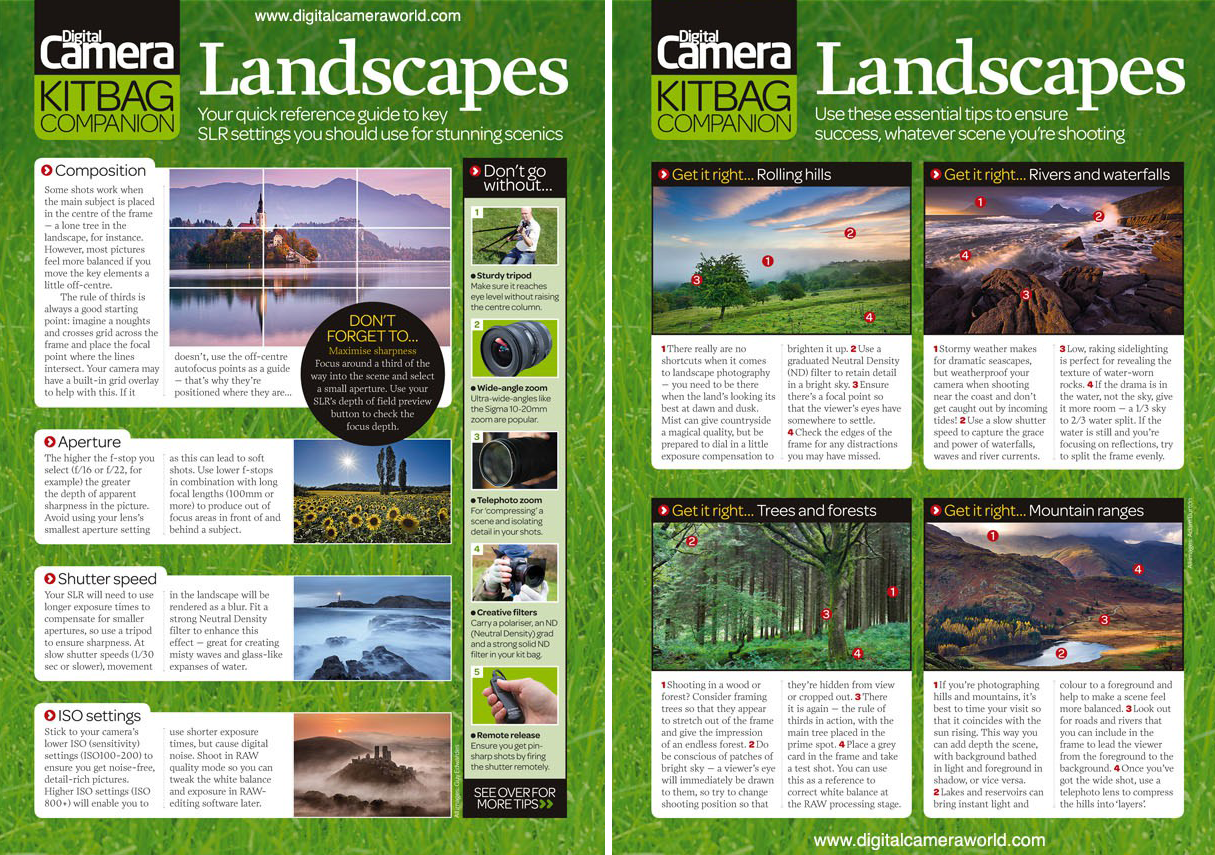Cheat sheet: How to take the perfect landscape shot
How do you capture the perfect landscape? By following the tips on our cheat sheet, of course!

Scroll down for your cheat sheet
When capturing landscapes, our goal is to faithfully capture the scene as it appears before us. Of course, long exposures and a handful of other scenarios show this rule to be somewhat flexible, but what we typically want in the majority of situations is for the resulting image to appear as accurately coloured, appropriately exposed and detailed as it appears to us in reality.
How to photograph landscapes
So how do you go about achieving this? And how do you make your images as impactful as possible? First, you need to decide on a composition. By choosing to include and exclude elements, you draw the viewer's attention only the strongest part of the scene. You won't want to include all of the sky you see, for example, as it will weaken the overall composition.
You need to get the balance right, and the rule-of-thirds principle is often a good way to achieve this. Here, you place key subjects along imaginary lines a third of the way in from one of the sides of the frame, or at the points where these lines intersect. This won't be appropriate for every scene, of course, but it's a good place to start if you're unsure.
Read more: How to hold your camera properly
You should also make sure your aperture and focusing distance provide your image with the most appropriate depth of field. Too wide an aperture, or too close a focusing distance, and you may find that you don't quite achieve this. Too small an aperture, however, and you may find that an effect called diffraction compromises sharpness. Something in the middlemost part of the range, such as f/8 or f/11, is a good starting point.
Shutter speed is also something to think about, and not just to get the right exposure. Although you will typically have more flexibility here than you would with moving subjects, you should think carefully about whether your shutter speed is either slow enough to smoothly blur anything that's moving, or fast enough to render it sharply. There's no right or wrong here as such, but it's something to think about with clouds or anything at ground level subject to movement by the wind.
Read more: White balance presets
Before you even head out the door, however, you should make sure you have all the tools you need for success. From a sturdy tripod on which to place your camera and a lens with the right focal length to get the kind of image you expect, through to smaller items such as filters and cable releases.
Make sure to bookmark us and check back for more great cheat sheets!

Read more
• More photography cheat sheets
• More photography tips
Get the Digital Camera World Newsletter
The best camera deals, reviews, product advice, and unmissable photography news, direct to your inbox!
The former editor of Digital Camera World, "Matt G" has spent the bulk of his career working in or reporting on the photographic industry. For two and a half years he worked in the trade side of the business with Jessops and Wex, serving as content marketing manager for the latter.
Switching streams he also spent five years as a journalist, where he served as technical writer and technical editor for What Digital Camera before joining DCW, taking on assignments as a freelance writer and photographer in his own right. He currently works for SmartFrame, a specialist in image-streaming technology and protection.

